Wild Cambodia Diaries 3
In the blink of an eye, our conservation project in Kratie province in north-eastern Cambodia has entered its fourth year.The 13,000-hectare and wildlife-rich plot of land has never failed to surprise us.
So far, we have recorded 243 bird species. That is more than a third of the nation’s bird records and comparable with avian diversity of the neighbouring Keo Seima Wildlife Sanctuary.
Here are some of the wildlife haven’s avian icons and prominent ecosystems!
Green Peafowl (Pavo muticus)
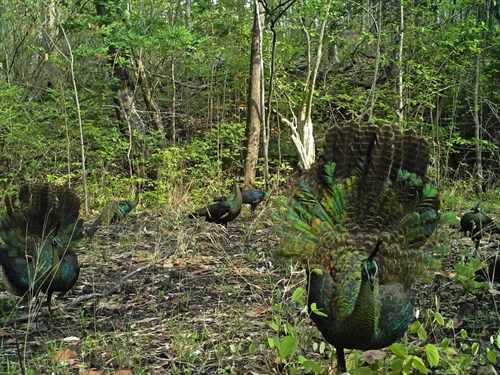
Green Peafowls strike a pose for our infra-red cameras installed to monitor local wildlife.
Green Peafowl commands the forest stage. Distributed in Indochina, the species was once regarded as the most common bird in the 1920s. But rampant hunting almost drove it to the brink of oblivioion. It is now listed as globally endangered by the IUCN Red List. In China, the species is still under severe threat (Kong et al. 2018). Its fate cannot be more different from its shimmery blue cousin, the Indian Peafowl (Pavo cristatus), that is widely distributed in the Indian Subcontinent and very popular in zoos and gardens.
Currently, Cambodia is home to one of the largest Green Peafowl populations in the world. The Eastern Plains, where our project site rests, is one of the strongholds. The bird is very common in the area’s Deciduous Dipterocarp Forests and Semi Evergreen Forests.
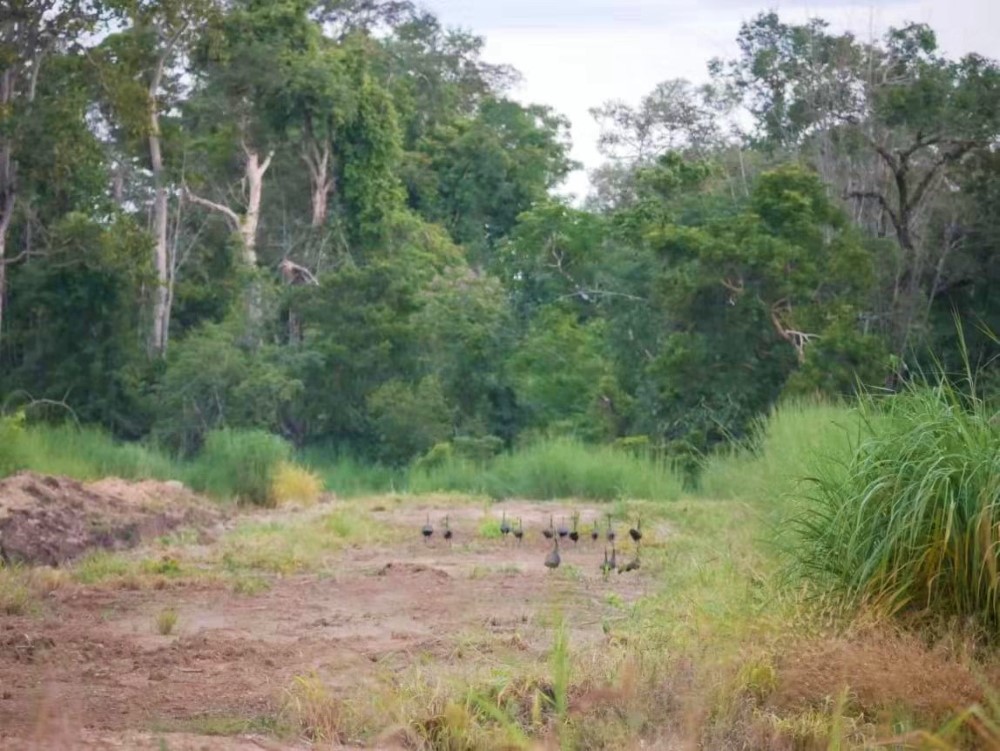
This mobile phone shot of a group of 14 Green Peafowls could make many birders green with envy.
Deciduous Dipterocarp Forests
Cambodia still preserves vast expanses of Deciduous Dipterocarp Forest. This type of sparse woodland does not only serve as a refuge for large mammals, but also ideal habitat for feathery friends. Falconets, woodpeckers, parrots and cuckooshrikes are all common residents.

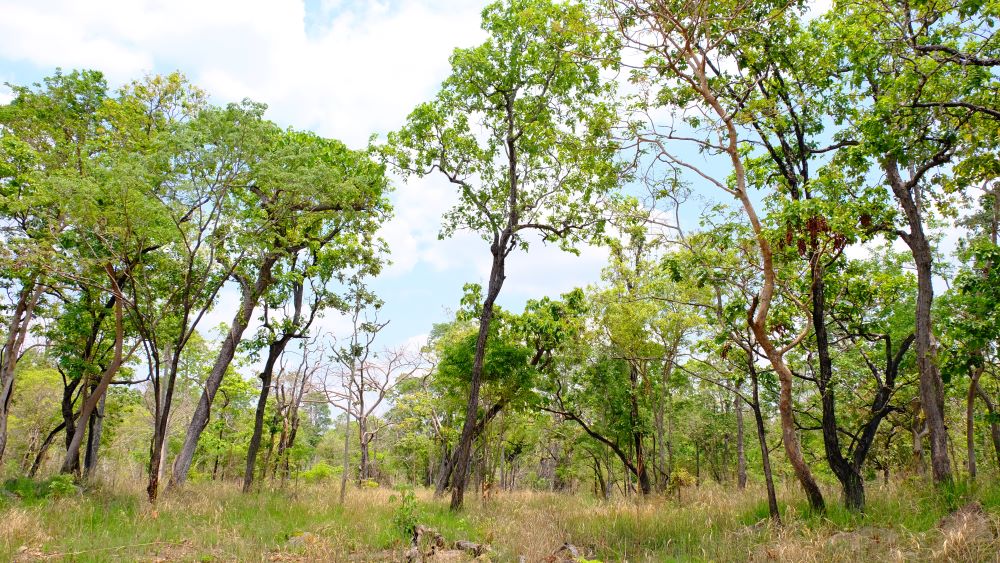
Deciduous Dipterocarp Forests have sparse tree cover
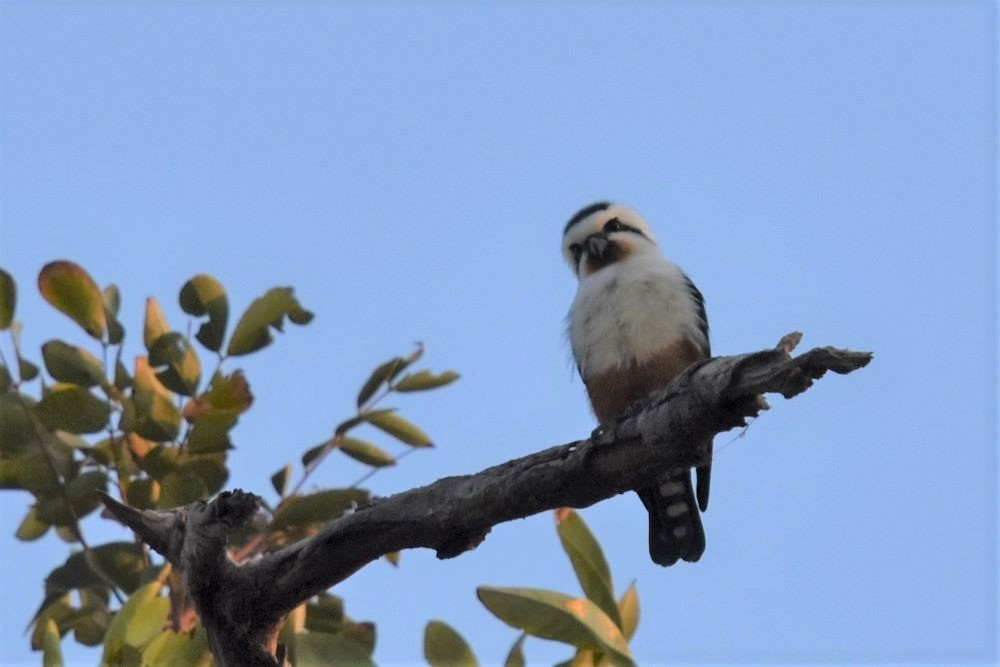
Collared Falconet (Microhierax caerulescens) is a common fixture in our project site. In China, only Yunnan has a stable population.
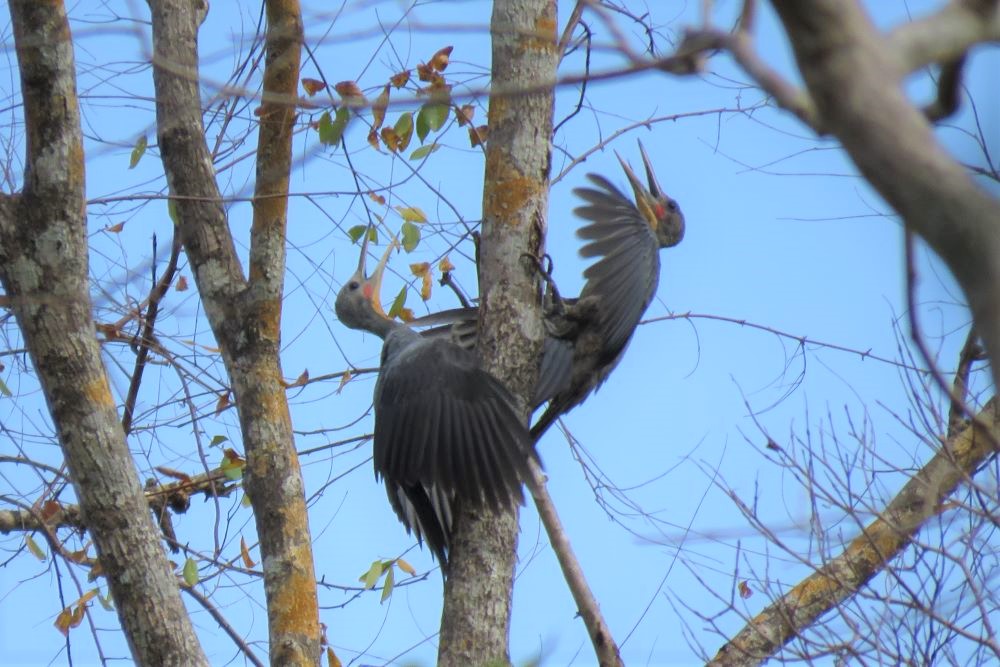
Great Slaty Woodpecker (Mulleripicus pulverulentus) is the largest woodpecker on earth.
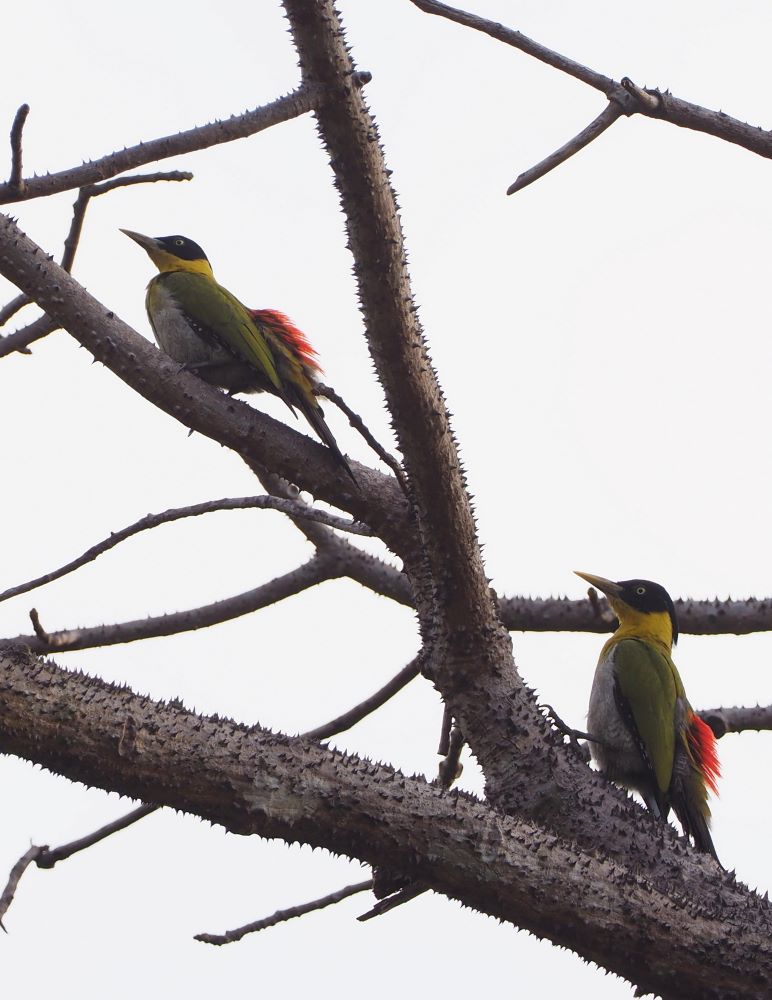
Black-headed Woodpecker (Picus erythropygius) lives only in Deciduous Dipterocarp Forests.
Semi Evergreen Forests
This habitat is rich in both bird and plant diversity. If you sit under a giant fig tree for an hour in the morning, you can see many hornbills, barbets and bulbuls arriving to fix their breakfast.
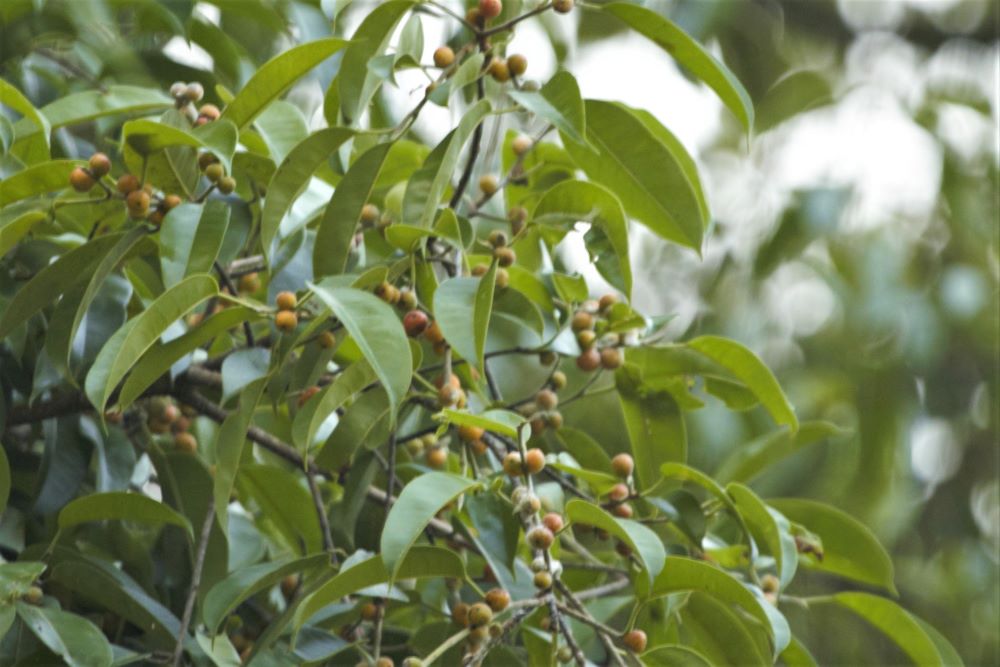
Fig trees are all-you-can-eat fruit buffets in the eyes of birds.
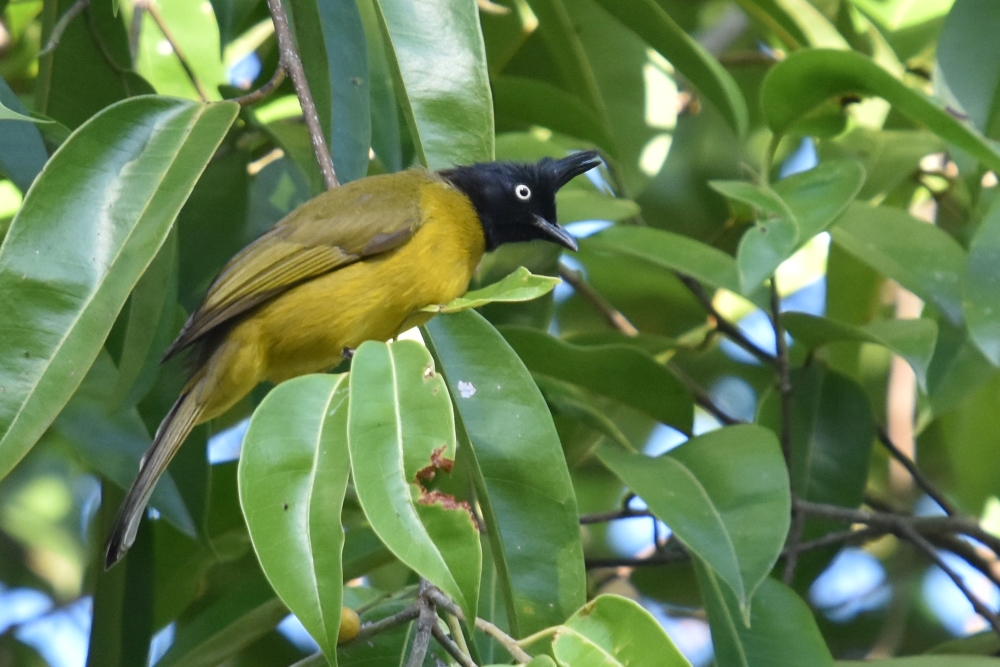
Black-crested Bulbul (Pycnonotus flaviventris)
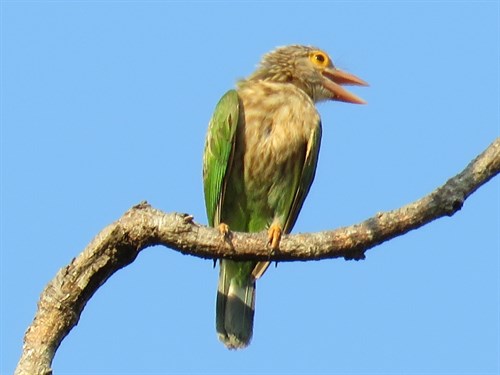
Lineated Barbet (Psilopogon lineatus) is one of the “friendliest” species of its kind. They are often found “posing” on exposed treetops.
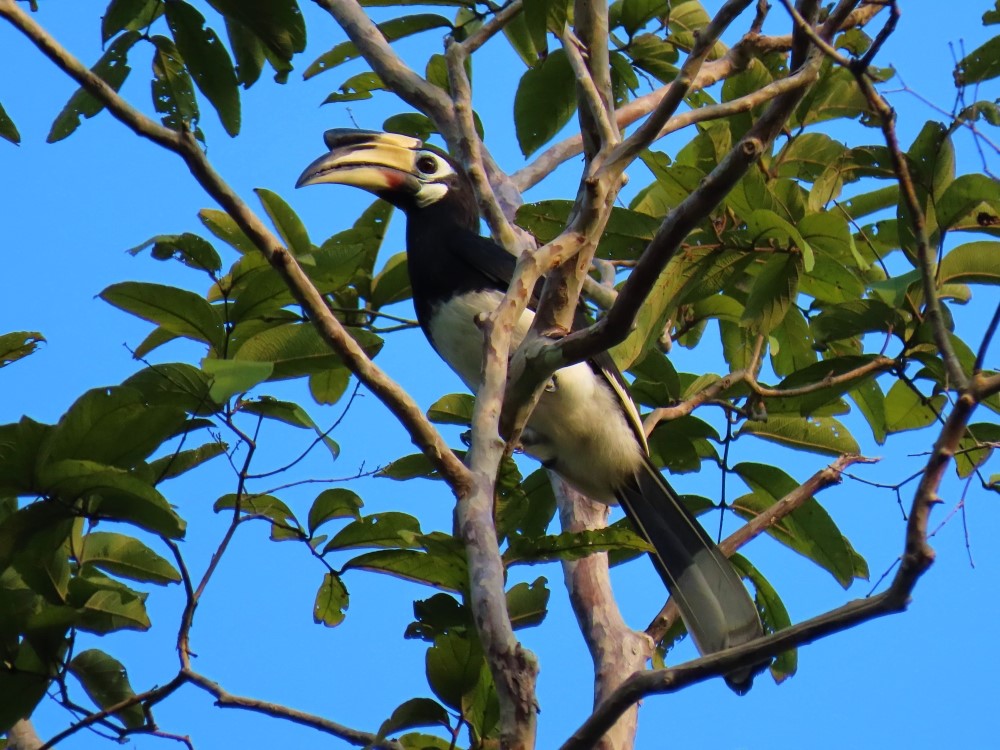
Oriental Pied Hornbill (Anthracoceros albirostris) often moves around in pairs or in flocks.
Ecological Reservoir
Upon our recommendation, our partner built wildlife-friendly reservoirs that soon attracted many water birds to settle. Common species include egrets, moorhens, jacanas and openbills. We once saw more than 100 Lesser Whistling Ducks (Dendrocygna javanica) flying above the water.

One of ecological reservoirs with large swathes of wetland
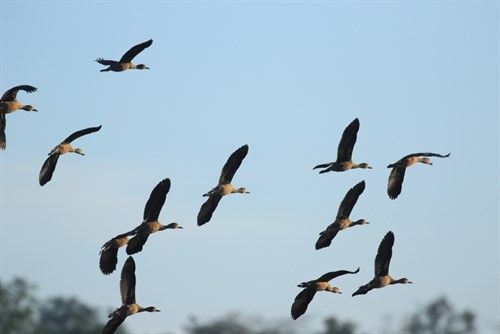
Flocks of Lesser Whistling Ducks now call the newly built reservoirs home
Grassland and farmland
Our partner grows banana and pepper in large scale on site. Upon our advice, a piece of land is reserved as an ecological rice paddy. When the fields turn golden, we have recorded more than 100 Yellow-breasted Bunting (Emberiza aureola) feeding there. The birds might look unprepossessing, but they are very rare and listed as Critically Endangered by the IUCN Red List now. This rice paddy provides a good way station on their migration journey.

Prized as a delicacy, Yellow-breasted Bunting was almost hunted to extinction in 13 years’ time
We also recorded two other buntings: Little Bunting (Emberiza pusilla) and Black-headed Bunting (Emberiza melanocephala). These species are rather common in China, but after going through scientific literature, we are taken aback to find that they are new records to Cambodia (Chan & Li 2017) !

Fields of golden are a feast to migratory birds.
Authors: Nemo Zheng and Ellis Li (Conservation Officer, Kadoorie Conservation China Department)
English Translation: Joyee Chan (Project Officer, Kadoorie Conservation China Department)
References
Chan, B.P.L. & Li, F. (2017) Significant records of three bunting species from Cambodia, including a first country record. BirdingASIA 28, 54–55.
Kong, D., Wu, F., Shan, P., Gao, J., Yan, D., Luo, W. & Yang, X. (2018) Status and distribution changes of the endangered Green Peafowl (Pavo muticus) in China over the past three decades. Avian Research, 0–9.
Nuttall, M., Nut, M., Ung, V. & O’Kelly, H. (2016) The first abundance estimates for the endangered Green Peafowl Pavo muticus in Cambodia: identification of a globally important site for conservation. Bird Conservation International 27, 127–139.
The Cambodia Bird Guide Association (2019) Birds of Cambodia. Lynx Edicions.

